From 9th-century Norse pagans to 21st-century followers of Björk’s pagan poetry, adventurous types have long flocked to Iceland. The terrain is a destination all its own—expanses of nubby, black lava stone, iridescent with minerals and blanketed by moss, dotted by steaming geothermal pools and buffeted by the churning seas, all of it lit by the midnight sun of summertime or almost never in the winter’s endless evenings. But Reykjavík’s Basalt Architects have spent the past few decades refining ways to experience it, along the way helping the country define who it’s going to be going forward.
Established in 2009 by founding partner Sigríður Sigþórsdóttir, Basalt now counts some 25 people on its team, and a CV that reads like a map of Iceland’s most characteristic (and glamorous) hot spots. Many of the retrofuturistic spas dotting the edges of the country’s ring road are Basalt’s, each an elegant balance of a material or three (generally concrete, lava, and local wood) and a form that best blurs the indoors and out (a series of low-slung boxes, often with porous perimeters of either glazing or the steaming water itself). The studio is currently making plans for C40, a health and wellness zone. It’s completing work on one of the country’s largest buildings, the National Hospital Treatment Centre, with five light-filled bars connected through central spines, as well as the hospital’s glazed Research Centre, both within the city limits, and a few (very) private residences farther afield.
But Basalt is certainly best known for its ongoing work with the Blue Lagoon, the famed geothermal spa tucked into a 751-year-old lava flow in the Reykjanes UNESCO Global Geopark. According to many estimates, more than one million people visit the Blue Lagoon each year. This summer, I was one of them, but first I had a coffee with the Basalt team at their sunny office near the city’s dockyards. “I don’t know how much you know about our swimming culture,” said partner Hrólfur Karl Cela, and my answer was, “Not much.” He continued: “Geothermal swimming is part of every single little municipality around the country. Italians have their piazzas. The British have their pubs. And we have our pools.”
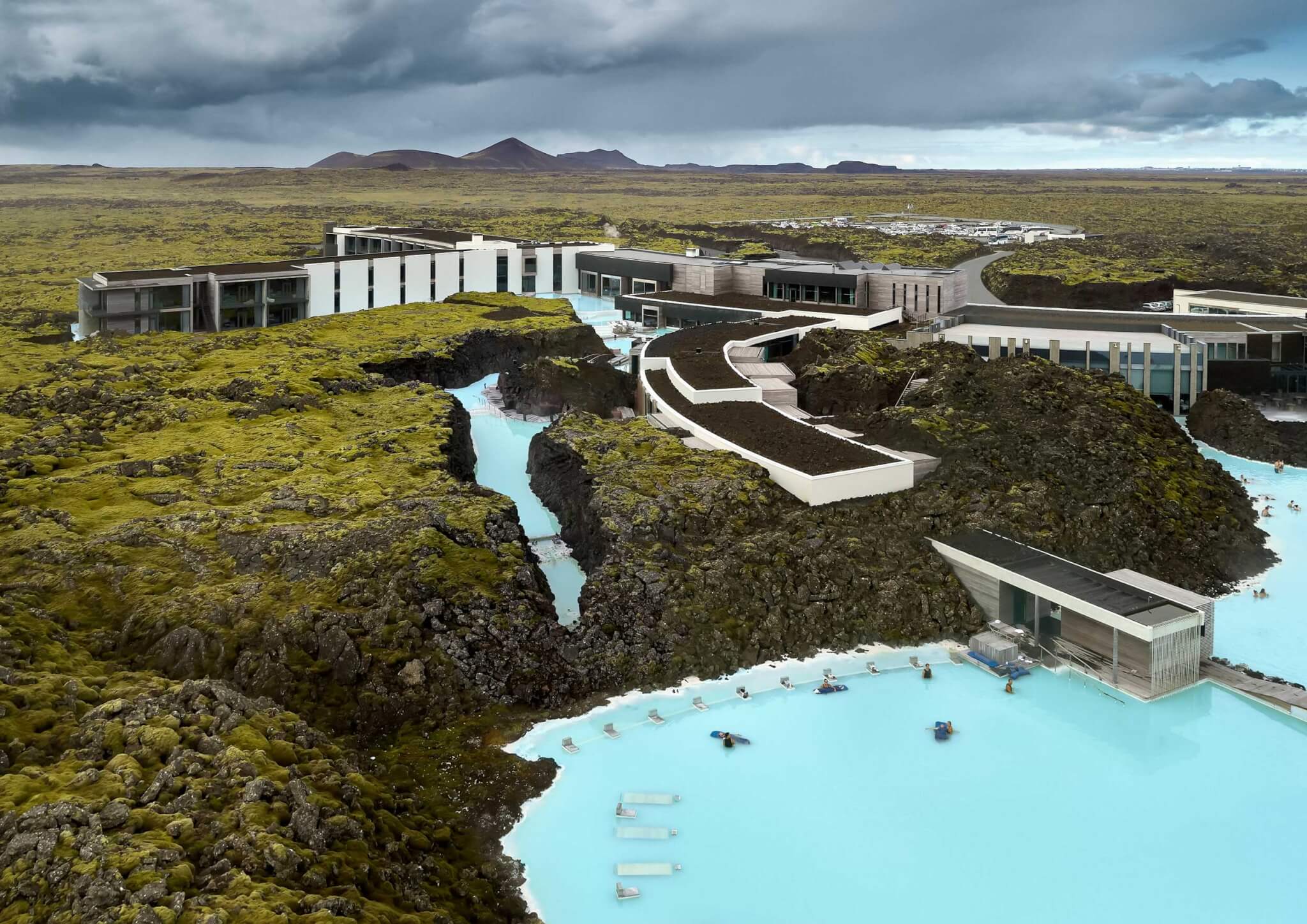
Basalt has done a few pools of its own, including the 2018 Guðlaug Akranes project in West Iceland, just south of the Arctic Ocean. Its triple-stack of circular forms, each surrounding an individual rock, channels untreated water from Deildartunguhver, Europe’s largest hot spring, in patterns derived from the process of sea pools formed via the tides, in the voids around beach rocks.
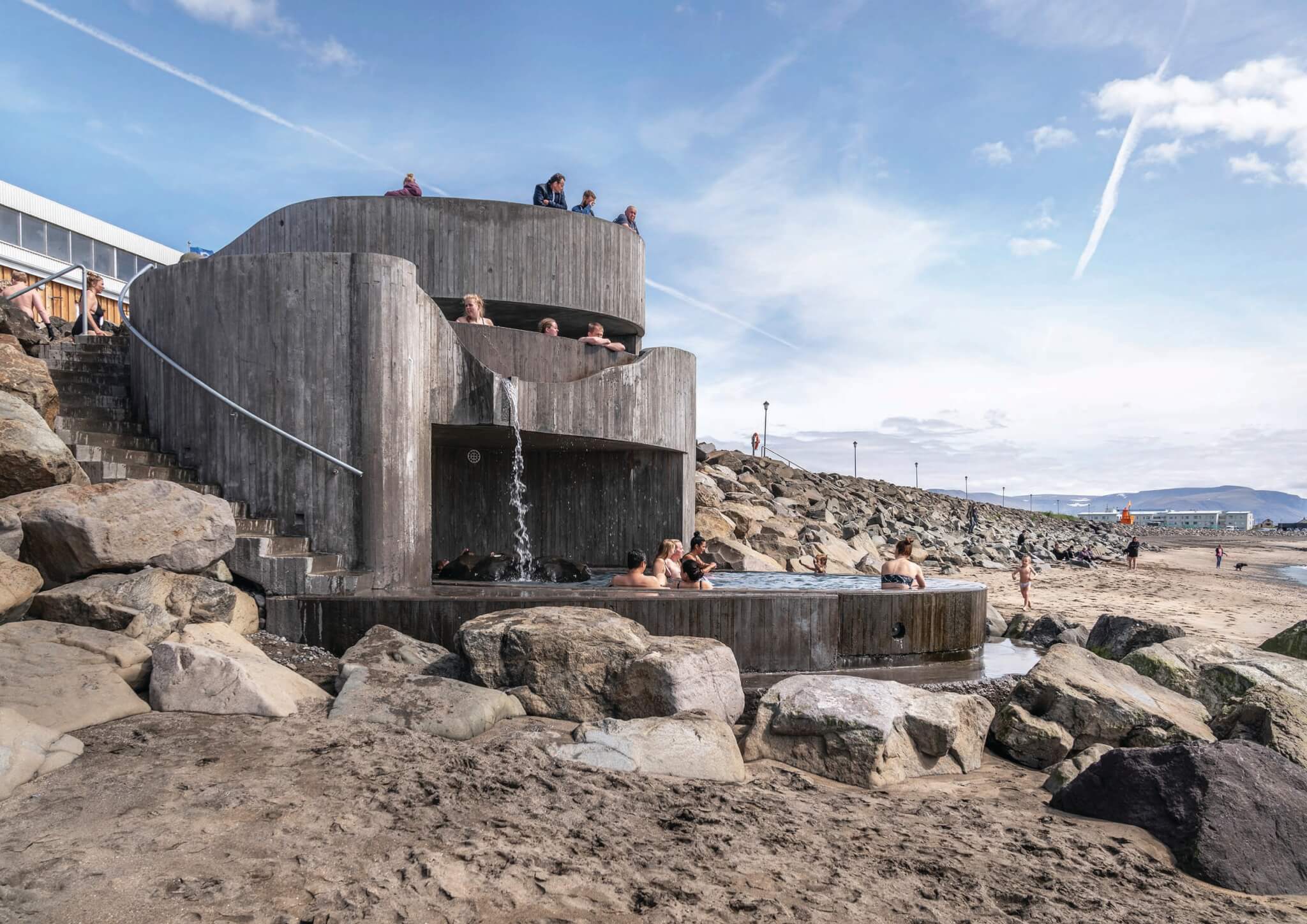
The Blue Lagoon was created by a similar, if man-made, runoff. “In the 1970s, it was the first geothermal power plant in the country,” Sigþórsdóttir said, and it pumped out excess water around the towers. “People discovered that the water healed psoriasis. Now, there’s a treatment center for it, and it’s used for making skin-care products.” Today, guests bathe in the milky, minerally blue water, made accessible through a simple series of concrete pools served by a crisp public building in the International Style.
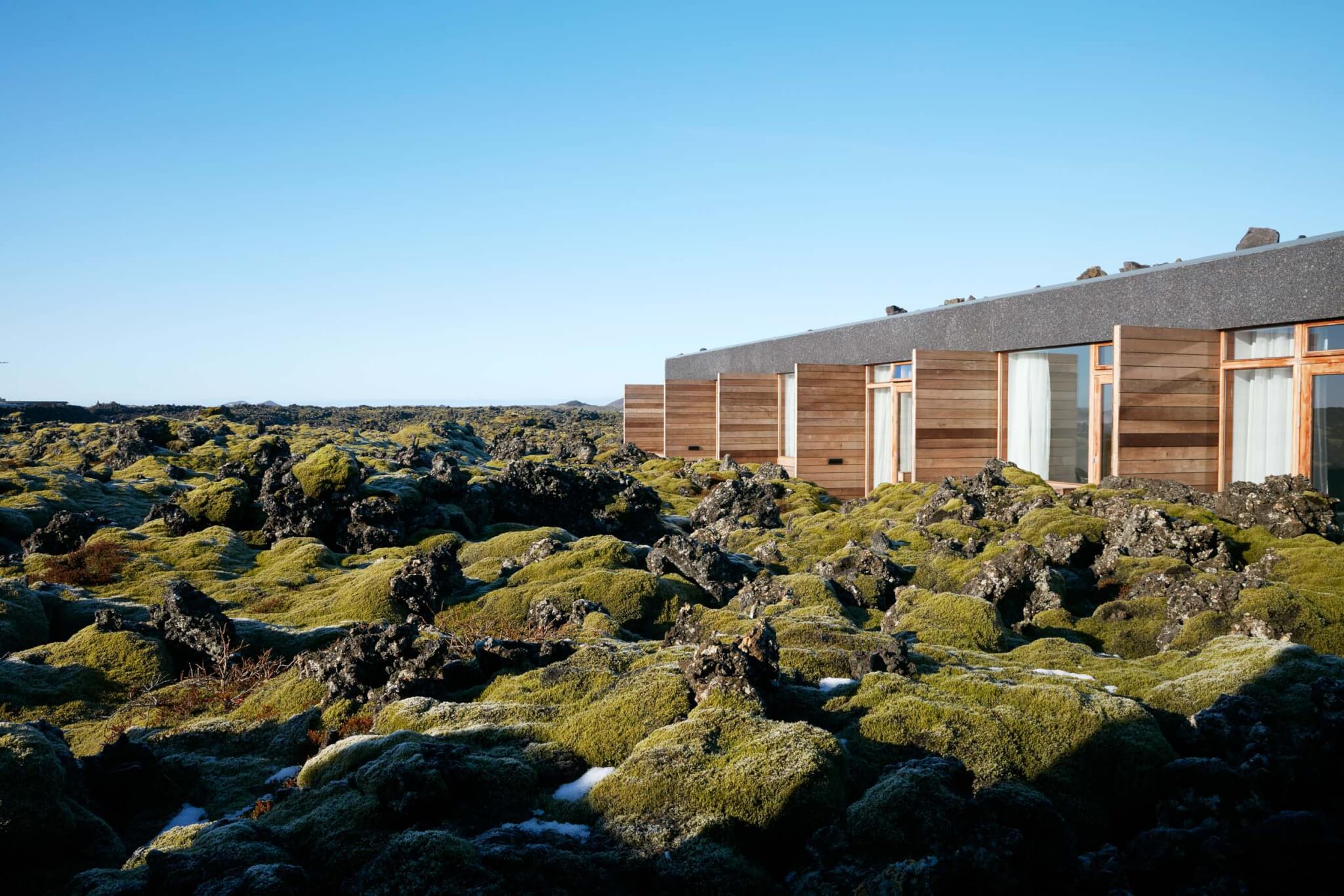
Since 1998, Basalt has expanded the offerings. First came 2005’s Silica Hotel, a private lava-coated-concrete and timber clinic a few minutes’ jaunt off the main drag. Thirteen years later, the Retreat arrived, with guest suites defined by glazing that just barely separates the airy interiors from the personal-use geothermal pools beyond. At the end of a glamorously shadowed underground passage, a 4,000-square-meter spa appears, offering interconnected treatment areas warmed by the hot springs. Above, the Moss restaurant serves modern takes on traditional Icelandic delicacies atop a monumental chef’s table made of local lava and fortified by a circular wine cellar whose walls are of a lava naturally reddened into a hue just shy of a bright Barolo. All that lava, by the way, has an identifiably craggy patina, but it also has a mind of its own: Last fall, the nearby Mount Þorbjörn erupted. The lava not only covered parts of the main road but scuppered plans to construct a new entrance to the Blue Lagoon, now under redesign. In its conference room, the Basalt team chuckle lightly at rumors that the eruption was caused by Iceland’s governor not getting sufficient approval for the plans from the local elves. (They’re also rumored to have slowed down construction of the dining room, until a USB stick with the blueprints was stuck into a hole in the wall.) I’ll just note that the team didn’t entirely rebuke the need for community outreach.
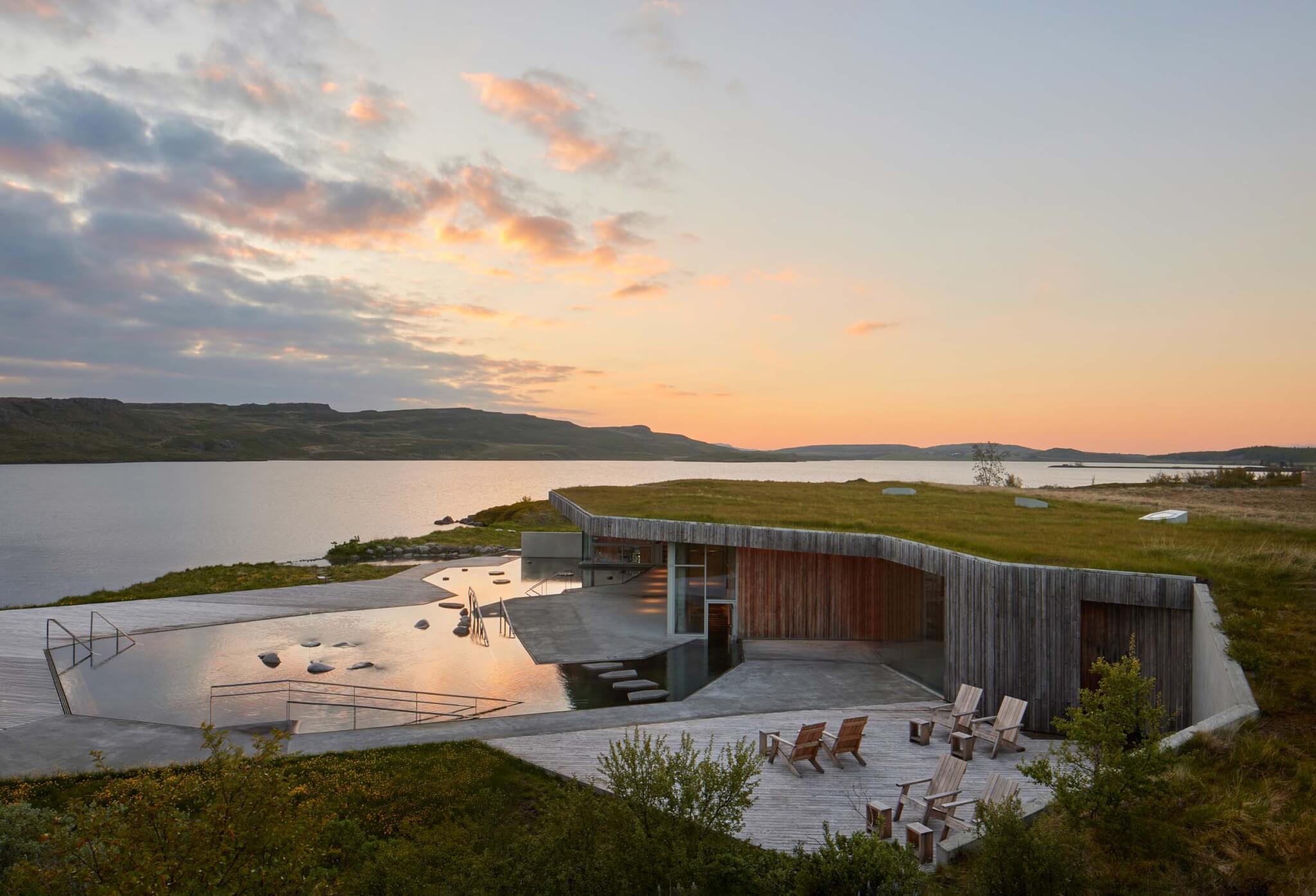
The difficulties, though, speak to the particularities of Icelandic architecture. These can be mythological. In 2019, Basalt completed the Vök Baths, a series of land-based, floating pools in East Iceland around Lake Urriðavatn. “Centuries ago,” Sigþórsdóttir said, “people noticed openings in the lake when it froze over. Immediately, they thought this was some kind of monster.” Perhaps even the Nykur, a sort of centaur that rides you to death by drowning. “It was steam, of course. But when the ice broke, it would form geometrical shapes in weird locations. And so the pools are inspired by the shape that would have been the opening of the eyes. We placed the pools outside, in the lake, to bring guests closer to the monster,” she continued with a slight grin.
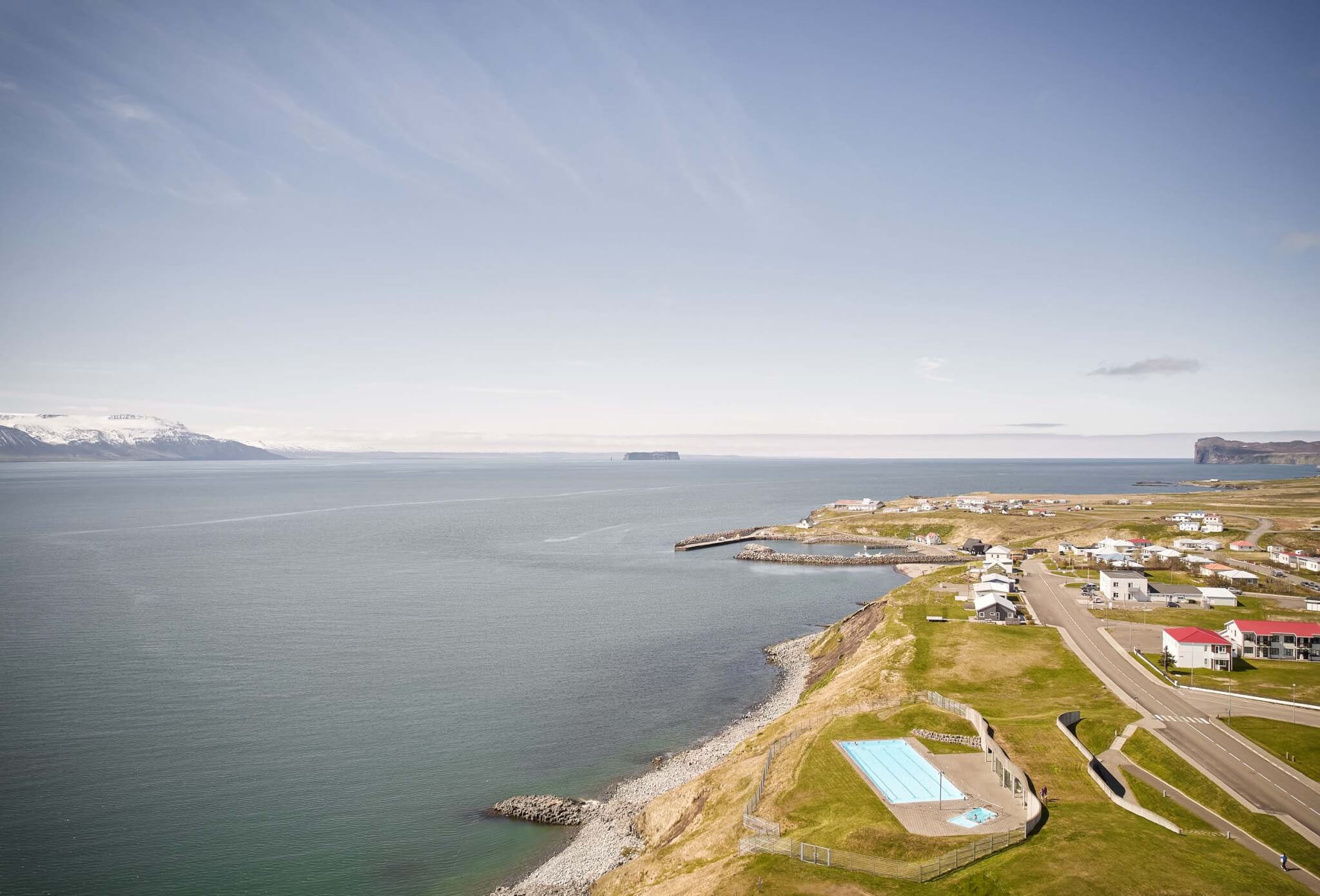
A human monster inspired 2010’s Hofsós Geothermal Pool. Basalt sited the rectangular swimming pool according to the saga of Grettir the Strong. “He was a really bad man,” explained partner Perla Dís Kristinsdóttir, “who was outlawed because of his wrongdoings.” On the run, he swam to Drangey Island. Presumably more law-abiding swimmers now can do a lap to the pool’s infinity edge, which seems to disappear into the ocean—and end, as Grettir’s saga did, on the distant island.
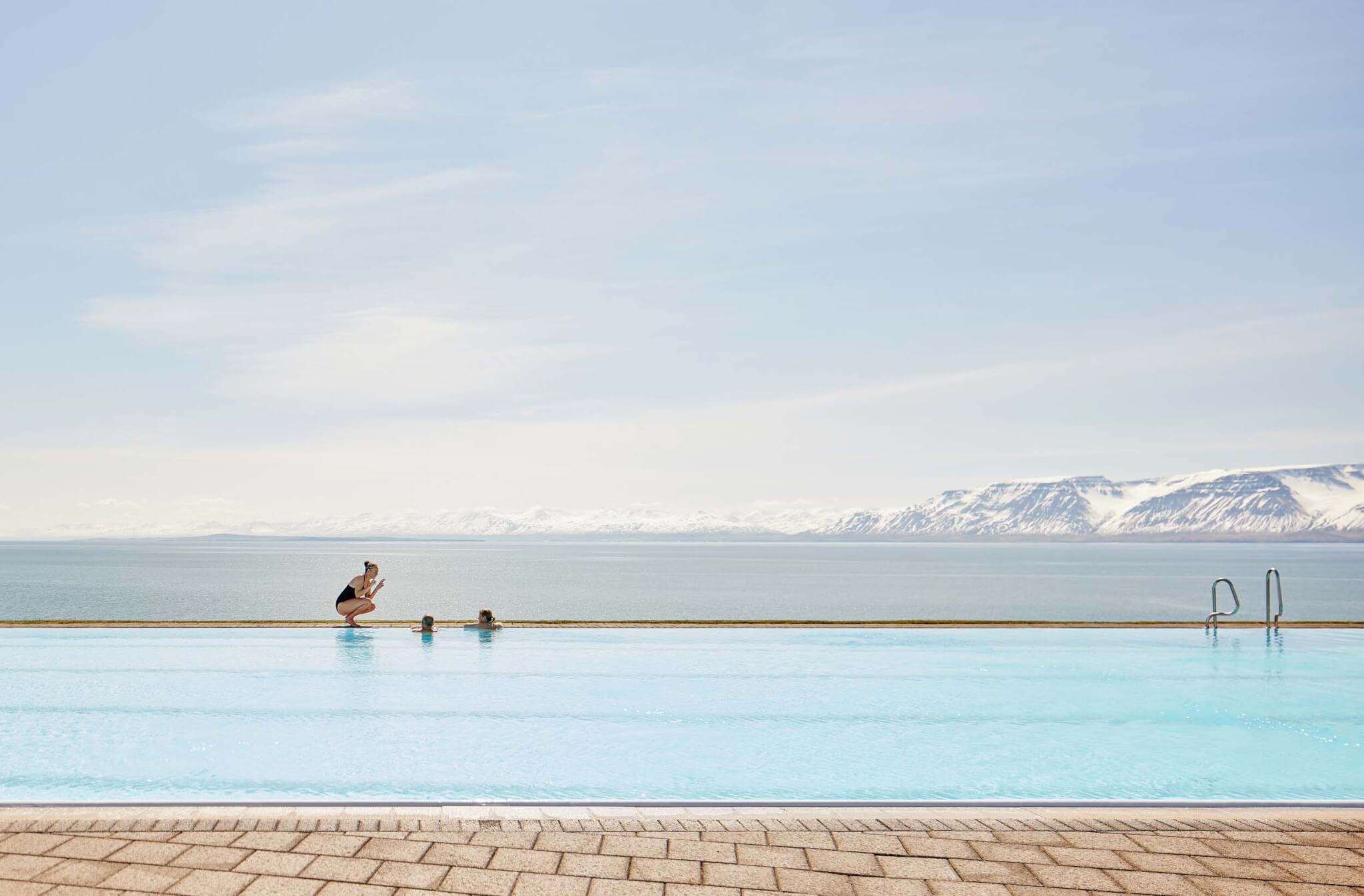
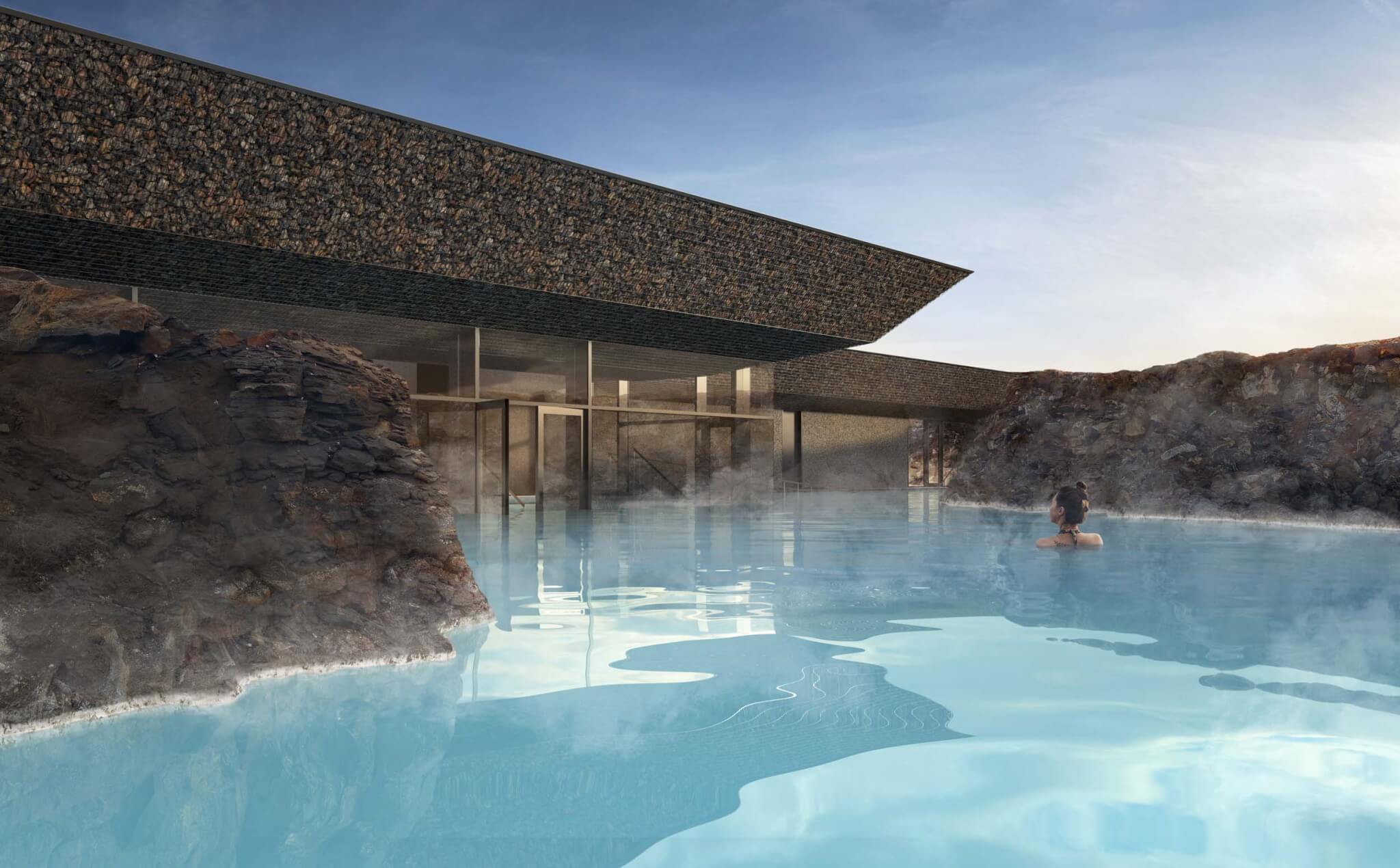
That persistent return to what Björk famously called the country’s “emotional landscapes” might be the firm’s signature. But it’s more a question of material than mythology, an embrace of what makes the country Iceland. A few weeks after my visit, I checked in with Cela via Zoom. He was literally half buried in volcanic rock, selecting by hand the boulders that would form structural supports and visual elements for the Earth Baths spa, opening soon in Mývatn, in the northeast. In another life, steam had cracked through the building walls. “Wherever you put a shovel down around here, you’ll get steam,” he said with a laugh. They had to build a basement of concrete and high-grade stainless steel to cope with the chemical composition of the water. The overhangs are filled with material from the earthwork. Some of the walls are cast with gravel, and the floor will be a kind of earthwork terrazzo. He climbed out of the pit and showed me the breathtaking views. Wind threatened the connection. I think about a conversation, safe in Basalt’s office, about the Highland Base project in central Kerlingarfjöll, where you can ski in the summer if you can get there and where, in fall and winter, winds blow ice at 150 miles per hour.
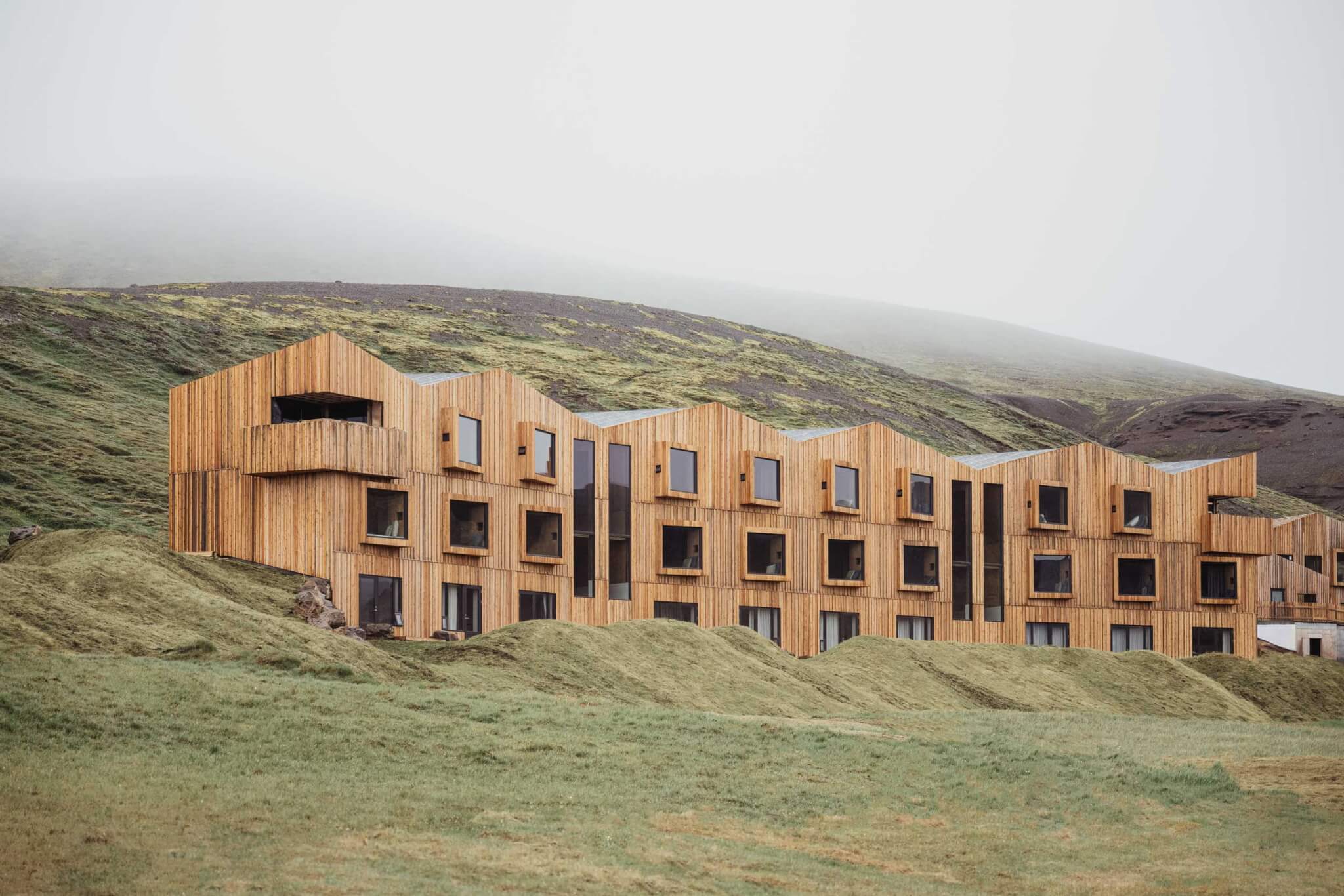
“It’s difficult here,” Cela amiably continued while climbing over a few rocks. “When you contact producers of architectural elements, when you give them the load requirements that are calculated for Iceland … well, most often they think you’re wrong.” But that’s just how it is, placemaking in a place like nowhere else on earth.
Jesse Dorris is a writer and radio DJ based in Brooklyn.
→ Continue reading at The Architect's Newspaper
